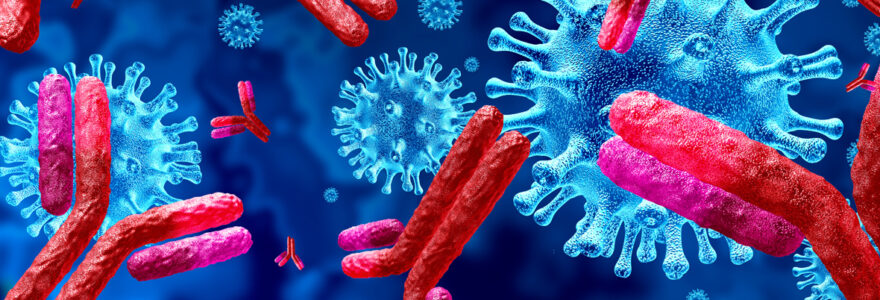Unraveling the complexities of aptamers and antibodies in biomedical applications, this discourse delves into their respective analysis and detection methodologies. With a magnifying lens on the unique sequence and surface attributes, an in-depth examination of their chemical and physical properties takes center stage. Further, the narrative navigates through the intricate terrain of amplification and assay techniques, providing an enlightening perspective on their roles in the aptamers versus antibodies debate. The stage is set for a comprehensive understanding of these fascinating biomolecules and their pivotal roles in the expansive realm of biomedicine.
Scrutinizing the Analysis and Detection Methods of Aptamers and Antibodies
Within the realm of biomedical applications, the evaluation and distinction between aptamers and antibodies have garnered substantial attention. These two entities, both significant in the medical and scientific domain, serve as crucial tools for disease diagnosis and treatment. Delving deeper into their structure and function provides insights into how they aid in the detection and analysis of various diseases.
Dissecting Methods of Analysis for Aptamers and Antibodies
Aptamers, short single-stranded DNA or RNA molecules, bind to specific target proteins or cells with high affinity. Derived through a process known as SELEX (Systematic Evolution of Ligands by Exponential enrichment), these nucleic acid probes offer various advantages over antibodies. Recent research highlights the potential of aptamers in biomedical applications, given their stability, ease of modification and low immunogenicity. On the contrary, antibodies, proteins produced by the immune system, have been the cornerstone for disease diagnosis for decades.
Detection Techniques in Biomedical Applications
The detection and analysis of antibodies and aptamers often involve a variety of techniques. Methods such as PCR (Polymerase Chain Reaction) and ELISA (Enzyme-Linked Immunosorbent Assay) are commonly used. These techniques, while effective, come with their set of challenges, which include sensitivity, specificity, and complexity.
Comparing the Analysis and Detection of Aptamers and Antibodies
Comparing aptamers and antibodies uncovers unique advantages and disadvantages. Aptamers, with their high specificity, offer potential for targeted drug delivery, while antibodies are known for their robustness and versatility. But, the use of either in biomedical applications is not without their challenges. Understanding these potential issues is critical for their effective use.
Exploring the Unique Sequence and Surface Properties of Aptamers and Antibodies
Delving into the world of biomedical applications requires an understanding of the unique properties and roles of aptamers and antibodies. The sequence of these molecular structures, whether dna or rna based, plays a pivotal role in their function. This sequence diversity allows aptamers and antibodies to bind to a wide range of targets, from proteins and cells, to small organic compounds.
The surface properties of aptamers and antibodies are equally significant. Each type exhibits different molecular surface features that influence their interaction with various cells. It is these interactions that determine the success of a biomedical application. Furthermore, the size of these molecules can significantly impact their effectiveness, with smaller molecules generally being more efficient.
Comparing aptamer vs antibody in terms of their sequence, surface properties, and application in the biomedical field can lead to valuable insights. These comparisons can help in understanding the strengths and limitations of each, thereby guiding the choice between them for specific biomedical applications.
Chemical and Physical Attributes: A Closer Look at Aptamers and Antibodies
Unveiling the intricate world of biomedical applications necessitates a deep dive into the detailed differences and similarities between the chemical and physical attributes of aptamers and antibodies. Aptamers, often referred to as chemical antibodies, have gained significant attention due to their unique binding properties and are known for their precise target specificity and affinity, much like traditional antibodies. The attributes of these versatile biological tools are largely dictated by their size, surface, and structure, as well as the chemical composition of nucleic acids like DNA and RNA.
The size of aptamers and antibodies significantly impacts their function. For instance, smaller aptamers can penetrate tissues more effectively due to their size.
The surface of these entities plays a crucial role in their interaction with various materials. For instance, solid beads are often used in biomedical applications to enhance the interaction between the aptamer or antibody and its target.
Chemical attributes like the presence of DNA, RNA and nucleic proteins in aptamers and antibodies are critical in determining their effectiveness and specificity.
Assessing the Role of Amplification and Assay Techniques in Aptamers vs. Antibodies
Amplification and assay techniques play an integral role in the comparison between aptamers and antibodies within biomedical applications. The detailed guide below provides an understanding of these techniques and their importance, using simple language and relevant examples.
Amplification Processes in Aptamers and Antibodies
Amplification is a process that increases the number of nucleic acid sequences, enhancing the detection of aptamers and antibodies. For instance, Polymerase Chain Reaction (PCR) is a common method used in amplification. It involves the use of a primer and a template. The primer initiates the synthesis of a new DNA strand, while the template provides the pattern for this synthesis. Thus, the amplification process can significantly affect the results of an assay.
Understanding Assay Techniques in Biomedical Applications
Assay techniques are crucial in biomedical applications. These methods are used to measure the presence, amount, or functional activity of a target entity (the analyte). The techniques may involve the use of an apparatus or technology to quantify the analyte. High precision and accuracy are vital in assay procedures to ensure reliable and reproducible results.
Role of Amplification and Assay Techniques in Aptamers vs. Antibodies
Amplification and assay techniques have a significant impact on the comparison between aptamers and antibodies. The difference in their structure and function can influence their amplification and detection in assays, thus affecting their applications in biomedical fields.
